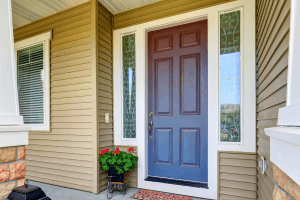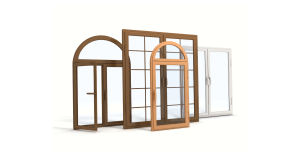As the trend towards eco-friendliness continues, many homeowners find themselves following certain “green” recommendations blindly—such as replacing doors and windows — based on the assumption of reduced energy costs and a lower carbon footprint. But what exactly does it mean to get an Energy Star certified product?
When it comes to identifying energy efficient windows, it makes sense that thicker glass would serve as a better thermal barrier, giving you better control of indoor temperatures. Indeed, double- and triple-paned windows are significantly more energy efficient than single-paned windows. But there are several other technologies that make Energy Star certified windows energy efficient. These include:
Low-E Glass Coating
Low-emissivity (Low-E) refers to a special coating applied to glass to block up to 90 percent of the sun’s direct radiation. During summer, low-E glass helps to keep the sun’s UV heat out, which reduces your cooling costs. During the cold winter months, low-E glass helps to prevent heat generated indoors from escaping, which reduces your heating costs.
Glazing
There are a number of alternatives to low-e glass coating, such as tints and reflective coatings applied to the exterior of the glass or between windowpanes to increase their thermal efficiency and reduce your heating and cooling costs.
Gas Fills
Double and triple-paned windows are usually filled with an inert gas—argon or krypton—to improve their thermal performance by reducing heat transfer between your home and the outside environment. Injecting inert gases between two glass panes does not reduce the transparency of the window, as the gases are clear. The gases are non-toxic and odorless, so they don’t pose any risk to your health. Krypton is mostly used to fill small spaces of less than 0.5-inches, while Argon works best for standard 0.5-inch glazing, because it’s cheaper.
Low-Conductivity Spacer Systems
Spacers refer to the structural polymer foams placed between two glass panes to improve the energy efficiency of windows. The edges of the panes represent one of the most susceptible points of heat transfer in your windows. Today, manufacturers place low-conductivity spacers around the edges of each glass pane to reduce heat conduction. They also provide a better seal to improve insulation and protect against moisture penetration.
Non-Metallic Frames
Since metal is a good conductor of heat, windows with metal frames tend to increase your heating and cooling costs. Using non-metallic frames made from wood, vinyl or fiberglass can prevent heat loss around your windows and lower your energy costs.
Replacing Your Windows and Doors
Replacing old windows with Energy Star certified products can help to provide a comfortable living environment while reducing your energy costs. If you are planning on replacing your existing windows, choosing energy efficient windows can provide great savings in the long-term and increase the value of your home.

